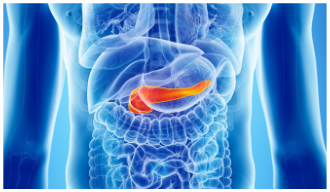Further peer-reviewed clinical evidence demonstrates Cellvizio enhances diagnostic accuracy and patient management including surgical decisions
New peer-reviewed systematic meta-analysis puts Cellvizio diagnostic accuracy at 99%
Mauna Kea Technologies today announced the publication of a peer-reviewed study on pancreatic cystic lesion (PCL) risk stratification using artificial intelligence (AI) models for nCLE image classification and the publication of a new peer-reviewed meta-analysis on endoscopic ultrasound (EUS) guided nCLE for PCL evaluation.
The majority of PCLs incidentally found in the population represent intraductal papillary mucinous neoplasms (IPMNs), a precursor of pancreatic adenocarcinoma. Current standard of care relies on a combination of clinical history, imaging, EUS features, and cyst fluid cytology for identification of IPMNs with advanced neoplasia. Today, approximately half of the IPMNs that undergo surgical resection are ultimately found to have low- or intermediate-grade dysplasia. To avoid unnecessary resections of indolent lesions considering the high post-operative morbidity (30%) and mortality (2.1%) rates, more accurate methods to diagnose IPMNs are crucial to guide patient management including surgical decisions.
The first study, entitled “High performance in risk stratification of intraductal papillary mucinous neoplasms by confocal laser endomicroscopy image analysis with convolutional neural networks,” published in the peer-reviewed journal Gastrointestinal Endoscopy (2020, DOI:10.1016/j.gie.2020.12.054), reported the successful development and application of AI algorithms for nCLE diagnosis and risk stratification of IPMNs. The authors demonstrated that deep learning models derived from nCLE images, were more accurate in diagnosing and risk stratifying advanced neoplasia in IPMNs compared with current standard diagnosis and society guidelines.
A second publication entitled “Needle-based Confocal Laser Endomicroscopy (nCLE) for Evaluation of Pancreatic Cystic Lesions: A Systematic Review and Meta-analysis,” was published in the Journal of Clinical Gastroenterology (2020, DOI:10.1097/MCG.0000000000001468). Seven studies enrolling 324 patients were included and the authors evaluated pooled diagnostic, accuracy, sensitivity, specificity, and odds ratio. The authors concluded that “nCLE appears to be an effective and safe technique for the diagnostic evaluation of PCLs.” Indeed, nCLE was associated with a sensitivity of 85%, a specificity of 99%, a diagnostic accuracy of 99%, and a post-procedure pancreatitis rate of 1%.
“Incidental pancreatic cystic lesions are increasingly detected and diagnosed in 8% of the world’s population,” said Robert L. Gershon, Chief Executive Officer of Mauna Kea Technologies. “These two publications further validate the value of our technology in the field of pancreatic cyst diagnosis and, importantly, risk stratification. We believe Cellvizio combined with artificial intelligence holds tremendous potential to improve patient management thanks to its ability to accurately classify and stratify patients with pancreatic cystic lesions.”


